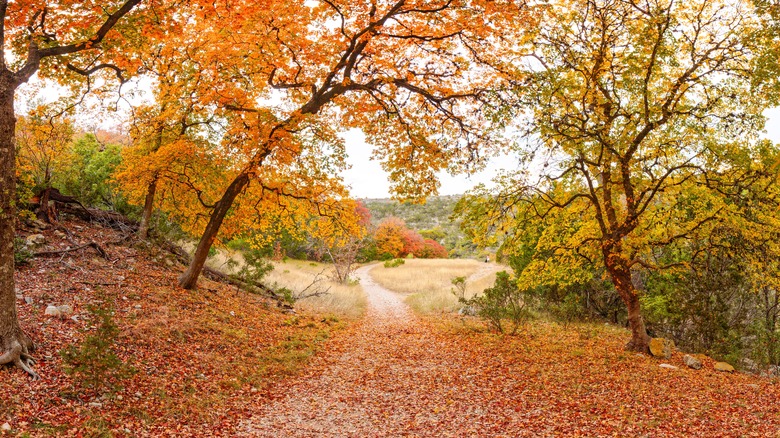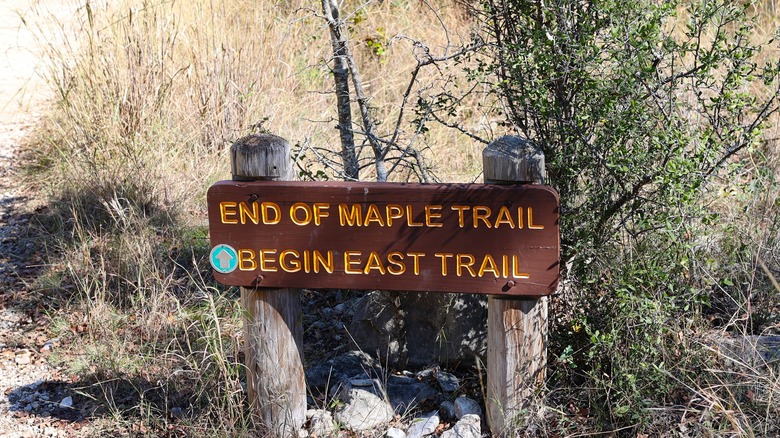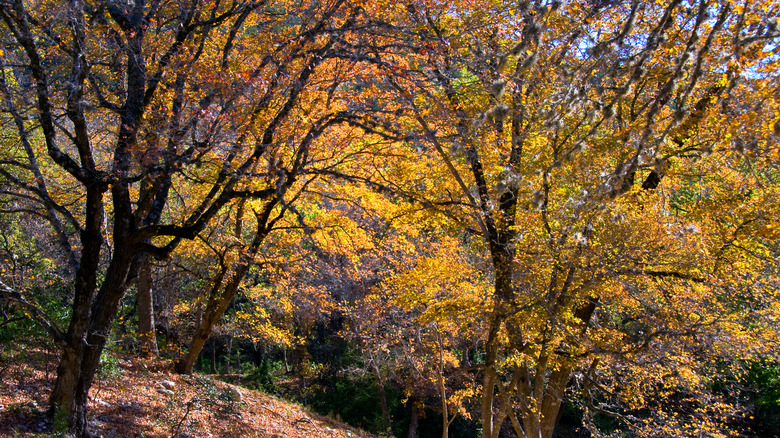The Texas State Park Full Of Hills And Canyons Famed For Its Fall Foliage Transformation
Texas may not be the first place that comes to mind when you picture autumn and the changing colors of fall, but the Lone Star State has more than just desert landscape to check out. During fall, Lost Maples State Natural Area is a haven for autumn foliage. This Texas state park is a hidden gem with hills and canyons that show off a stunning seasonal transformation in the fall. As the leaves turn vibrant hues of red, orange, and yellow, leaf peepers can take it all in while exploring the beauty of the park's more than 2,174 acres.
Lost Maples State Natural Area gets its name from the Uvalde Bigtooth maple trees that thrive in the area. These and other tree species, such as oak and sycamore, are the reason this park is one of Texas' most popular places to admire fall foliage. There are also plenty of activities to do in the park while admiring the scenery, such as hiking, camping, and fishing. Whether you're an experienced hiker or just looking for a peaceful nature walk, this park is the perfect Texan getaway. To continue your hunt for autumn foliage, float down a river at Garner State Park while being surrounded by fall colors.
Planning your trip to Lost Maples State Natural Area
If you're visiting Lost Maples during its famous fall foliage season, a little planning ahead will save you a headache. Because the park is so popular during October and November, it often fills up, and the capacity is limited. So, it's recommended that visitors reserve their day passes or campsites in advance by phone or online on the Texas Parks and Wildlife website. Weekends are especially busy, so going during the weekdays can offer a quieter experience away from the crowds.
For the best leaf peeping, plan your visit for mid-October to November. However, travelers can also keep an eye on the park's foliage reports, which provide updated information on the color changes in the park. Hiking is probably the best way to admire the park's fall scenery. There are over 10 miles of trails ranging from easy, family-friendly strolls to more challenging climbs that lead to panoramic views of the colorful landscape. The Maple Trail, named for its many maple trees, is a great hike specifically for foliage hunters. The East Trail is also a popular route leading hikers through scenic hills to Monkey Rock, an interesting natural formation that resembles the animal's face.
Once you've had your fill of hiking, Lost Maples offers 30 campsites complete with water and electricity, as well as some more primitive campsites for those who like to rough it. It's worth considering an extended stay, as there are lovely spots to have a picnic or go birdwatching. Although it's not one of the best national parks in America for stargazing, there are several dark areas for looking up at the wide-open night skies.
Things to know before visiting
The park is open every day between 8:30 a.m. and 4:30 p.m., and there is a $6 entrance fee (kids under 12 can enter for free). Maps are available for download on the website, as well as a bird checklist for watchers looking to identify new winged friends. Visitors should also keep in mind that there isn't any cell service in the area, so come prepared to unplug and focus your attention on nature.
Lost Maples State Natural Area is just under two hours by car from San Antonio, so it's a great choice for a day trip from the city. Nearby attractions include Medina Lake and a little town called Bandera, which is also considered the Cowboy Capital of the World. In town, visitors can check out the local rodeo, go horseback riding, or grab a bite to eat. There are a variety of accommodations in Bandera as well, from glamping setups to motels and guest houses. History buffs may want to make time to explore the town after hiking through Lost Maples, as many of Bandera's historic sites go back to the mid-1800s. If you want a more traditional fall getaway, head to the Berkshires in New England for vibrant, leafy views and charming, historic towns.


